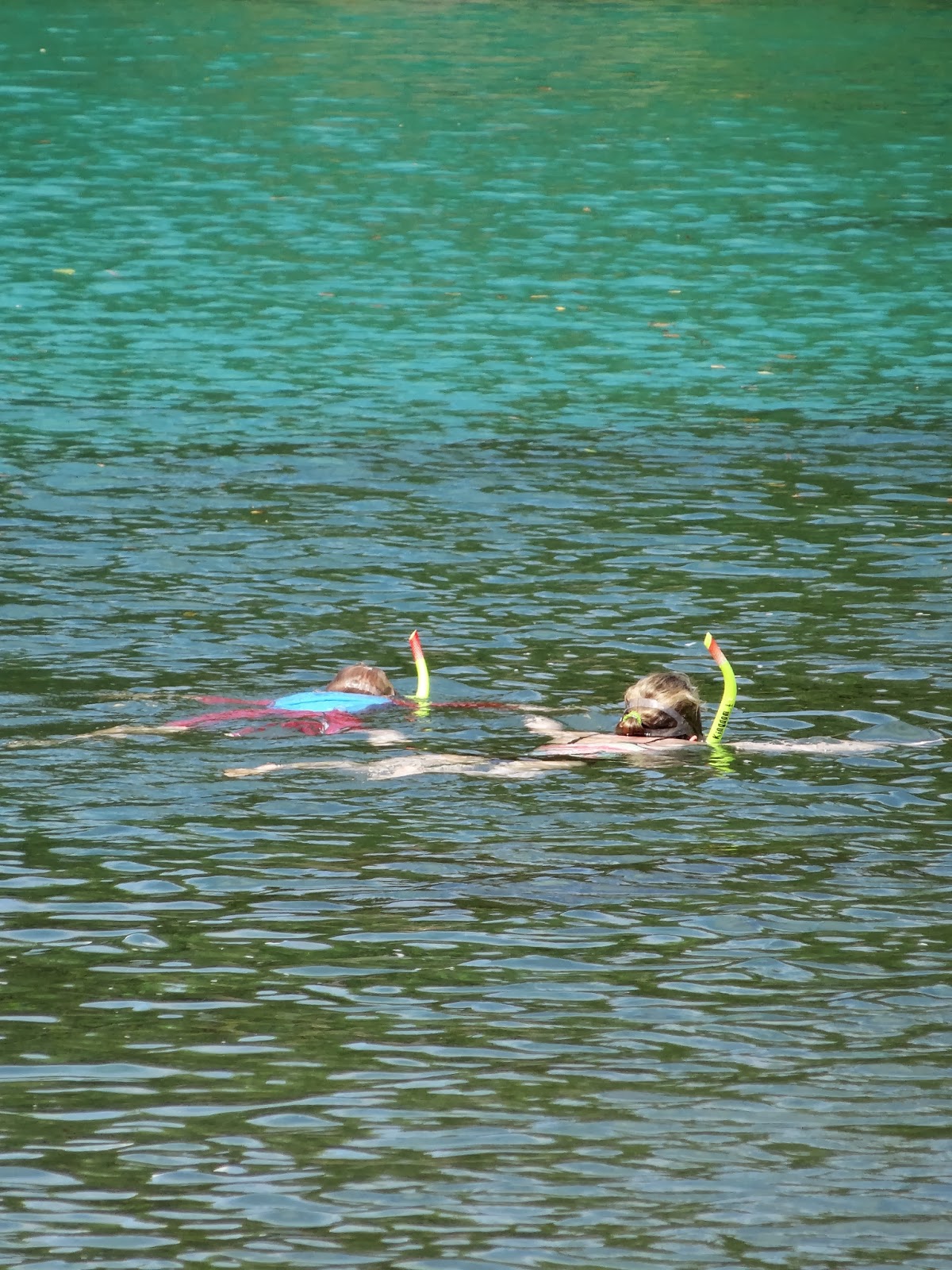We're neither brave nor sporty enough to scuba dive, but snorkelling, kayaking and hiking aren't beyond our capabilities, and we enjoyed all of these and more in Palau. Arriving at night after a four hour direct flight from Taoyuan, it was too dark to see more than the road and hotel before we went to bed, but the morning revealed Palau in all its glory in the beautiful view from our hotel room:
We stayed at the Sea Passion Hotel, which is one of only three hotels in Palau sited next to a beach. Beaches are rare due to the limestone/coral reef foundation of the islands. The Sea Passion beach is situated in a small lagoon, so there is little in the way of currents or waves, but much in terms of coral reefs thriving with fish and other sea creatures. I was so happy to be staying at the Sea Passion because snorkelling in the water off its beach was one of the many highlights of our visit.
The hotel rents out snorkels and lifejackets for US$5 a day. We found lifejackets unnecessary as the salty water buoyed us up and there was no undertow to sweep us away.
We spent our first day reconnoitering and relaxing by the beach. The reef fish were an endless source of fascination and not at all fewer in number or species than those people normally have to pay to see elsewhere in Palau, according to our tour guide on a kayaking trip we took later. In fact, on our final day we couldn't resist taking a last opportunity to revisit the beach waters.
Then an hour or so before we were due to be picked up and taken to the airport, my son said he wanted to go swimming again.

But I'm getting ahead of myself. We walked into town, despite the heat and the strong sun, and it was interesting to see Palauan homes and the way people lived. Palau has a population of only roughly 20,000, and its main industry is tourism. As with many small, remote islands, imports are expensive and supplies are unreliable, so that the Palauan way of life is quite simple and relaxed, and many people are poor compared to Westerners and other citizens of more developed nations. Most houses are wooden shacks with corrugated iron roofs, and we saw lots of chickens ranging free and even a family of goats. But poverty hasn't made Palau a dangerous place to visit, and nor has it resulted in a degraded environment. In fact, Palauans seemed to be very proud and protective of their unique and stunningly beautiful islands. We saw very little rubbish and few poorly kept areas.
On our second day we hired a car and drove to the very top of the largest island, which took about an hour. Speed limits are frequently low through long stretches of the only main road on the islands so this adds to driving time, but the views of the sea or lush jungle made the time spent in the car less onerous. We drove to the tip of the main island to see a set of monoliths that were set there about 4,000 years ago.
No one knows what their purpose was, but some believe that the monoliths mark a meeting place for the gods, ready for their eventual return.
The man who collects the US$5 entry fee sits at the top of the steps that lead down to the monolith site and spends all his days looking out over the spectacular view.
He told us he has the best office in the world.
My son was pleased to meet the ticket officer's other distraction while on duty, which was a feral cat he had tamed by offering it food.
On our way down the other side of the road that loops Palau's largest island, we stopped at another tourist attraction, Ngardmau Waterfall. Because we arrived quite late in the day, around three o'clock, all the large tour groups were leaving as we drove in.
There are three ways to get to the waterfalls - monorail, zipwire and hiking. The first two seemed to take the challenge out of the visit and were expensive (US$20 for what would have been a five minute monorail trip). We also wanted to experience walking through the Palauan jungle, so we took the thirty minute hike alternative.
It was absolutely the right choice because if we hadn't hiked we would have missed out on sights such as this. The final part of the journey to the waterfall entails walking along a riverbed.
Because we'd arrived so late in the day, we had the waterfall entirely to ourselves.
The figure near the centre is my son. The water is warm and the current isn't strong, so both he and I couldn't resist spending some time in there. After an hour or so of peaceful solitude in this beautiful natural environment, we dried off and hiked slowly back uphill to our rental car and the journey back to the hotel.
These two days were just the beginning of a wonderful holiday. I'll write about our snorkelling and kayaking adventures next time.











No comments:
Post a Comment